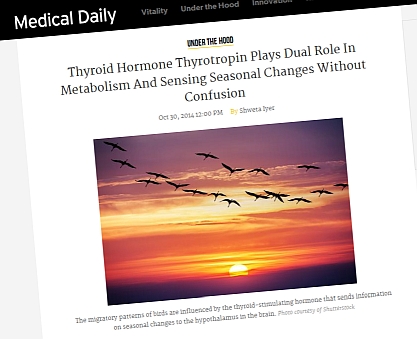It is some time now since I found out that not all TSH is the same. TSH is attached to sugar molecules - and these can vary. From the first realisation that this was the case, I assumed (without any evidence at all!) that this was significant and important. That which sugar molecule is attached could affect what the TSH does.
I don't pretend to know or understand what that significance is, nor how important it might be, just that it can't simply be brushed under the carpet.
So my delight and astonishment at reading the article below (you will have to follow the link to read it all). If it proves correct, then thyroid issues yet again seem to be absolutely fundamental to all animals in yet more ways.
Thyroid Hormone Thyrotropin Plays Dual Role In Metabolism And Sensing Seasonal Changes Without Confusion
An international collaborative study between Japanese and American scientists has revealed how a single hormone multi-tasks without muddling up its functions. The hormone in question is thyrotropin, the thyroid-stimulating hormone (TSH) that manages to activate seasonal sensing and regulate metabolism without any confusion.
TSH is secreted from the pituitary glands from two parts. TSH secreted from the front of the pituitary gland, pars distalis, goes on to stimulate the thyroid gland to secrete the hormone thyroxine, which plays a primary role in the regulation of metabolism.
TSH is also secreted from the stalk of the pituitary gland, pars tuberalis, and is known to act on the hypothalamus. While both proteins have the same structure, the exact role of TSH being secreted from the pars tuberalis was unknown until the Japanese team, led by Professor Takashi Yoshimura, discovered it acts as a novel spring-calling hormone, sending information and controlling how the body reacts to seasonal changes.
If that was interesting, read the rest of the article here:
medicaldaily.com/thyroid-ho...
And, at present, the full paper is available here:
cell.com/cell-reports/pdf/S...
Full text available on-line and without charge:
cell.com/cell-reports/fullt...
Rod
